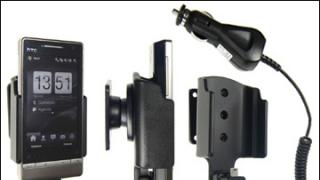By default, AutoCAD has a dark gray background color, to change it, read our little instructions:
1) Right click(Right Mouse Button) in any free place in the graphic area of the program and select "Options"(this is the fastest way to access AutoCAD global settings).
2) In the window that opens go to the "Screen" tab(if you don’t see it, then use the arrows located on the right) and Click on the "Colors" button.

3) A window will open "Drawing window color scheme", in him:
on the left - selecting a space for configuration (we are interested in "2D model space")
in the center - an interface element of this space (select “Homogeneous background”),
on the right - the color of the selected interface element - simply select the desired color from the list or click “Other colors” to open a palette with a large number of available colors.

4) In the color selection window go to the “Color Numbers” tab And select any color you like and click “OK”.

It’s worth making a small digression here.
All AutoCAD users can be divided into two large groups: those who like to work on a dark background and those who like to work on a light background. Personally, I belong to the second category. In my opinion, using a dark or black background does not in any way reduce the strain on your eyes (the main argument of its supporters). Quite the contrary - a very small number of colors will be in contrast to the black background; you will have to use “acid” purple, light green and turquoise lines to at least distinguish something on the screen. In addition, all black lines will appear as white lines on the screen. It will be difficult for you to imagine what your drawing will look like when printed (especially in color). I would compare it to driving through a city at night - a dark environment and bright spots from the headlights of oncoming cars hitting your eyes. My eyes get tired of such a load very quickly. However, in my opinion, setting white as a background is also not very wise - it is very bright and long-term work on such a bright background will negatively affect your vision (and the monitor). Personally, I chose a light gray background color for myself - color number 254. And over the 10 years that I have been working in the program (on average 5-8 hours a day) I have managed to maintain excellent vision. Plus, I really like the ability to use deep, rich colors in my drawings - blue, red, black, etc.
5) If in the previous step you selected some light color as the background color, You should also change the color of the “Crosshair” and “Viewport Control” elements- the best thing to some dark(for example, dark blue or black). After this you can click "Accept" and look at the result. If your program version is lower than 2015, it makes sense to also change the color of the “Dynamic Dimension Line” interface element- the best thing to some bright(for example, orange or blue), because by default it is gray and can blend into the background)

If you want to make not only the background light, but also the main interface elements (ribbon, status bar), then select "Light" color scheme:

In AutoCAD 2015 it will look like this:

But personally, I prefer the dark version of the tape and panels.
Thank you for your attention. Now you can always easily and quickly change the color of the background and ribbon if necessary. I advise you to try working on both a light and dark background and choose the most convenient option.
The basic elements of the AutoCAD 2007 window (title bar, menu system and toolbars) are completely similar to the corresponding elements of any modern Windows application. Thus, the title bar displays the name of the active application (AutoCAD 2007) and the name of the current drawing file (Drawing1.dwg). The menu structure should also be familiar to any Windows user. In particular, several menus ( File, Edit, View, Express, Window, And Help are present in almost all Windows application menus, although these menus in AutoCAD contain a number of additional commands. Additionally, the AutoCAD menu bar includes menus specific to AutoCAD only ( Merger, Format, Service, Drawing, Dimensions, Change). We'll talk more about AutoCAD 2007 menus later in this chapter.
Below the menu bar are toolbars ( Standard, Styles, Workspaces, Layers, Properties). Almost all the buttons on these panels, except for a few panel buttons Standard, will be unfamiliar to a novice AutoCAD user. Strictly speaking, this book is dedicated to the study of AutoCAD tools and commands represented by the buttons of these and other toolbars. Therefore, we will not dwell on them now, since you will become familiar with each of the main AutoCAD drawing tools as you study the material in the book.
Three more toolbars are displayed at the left and right borders of the AutoCAD screen: on the left - Drawing, and on the right Change And Drawing order(small panel with four buttons located below the panel Change). These are ordinary toolbars, which by default are located not horizontally, but vertically.
But the two large objects covering the black area in the center of the screen are not toolbars. On the left is the palette BINDER MANAGER, and on the right is the paditra ALL PALETTES. Both the Sheet Set Manager and Tool Palettes are very convenient tools, but they are primarily intended for experienced AutoCAD users. In our case, these panels are redundant tools that only clutter the screen. Therefore, move the mouse pointer one by one to the buttons for closing the palettes BINDER MANAGER And ALL PALETTES and click these buttons to disable these palettes.
Now you see a black empty area in the middle of the screen. This area in AutoCAD is called the drawing area. The mouse pointer, entering this area when moving across the screen, takes the form of a crosshair pointer, as shown in Fig. 1.3. When using some AutoCAD commands, the pointer can take other forms, depending on the purpose of the command and the stage of its execution.
Additionally, the AutoCAD 2007 window, like any other Windows application window, can display scroll bars. In general, using scroll bars in AutoCAD is not recommended because not only are they less convenient than AutoCAD's zoom and pan tools, but they also take up space in your drawing area. Therefore, now we will disable the display of scroll bars, and also change the color of the drawing area. These and other AutoCAD interface customization operations are performed using the dialog box Settings, which you will use very often in your work.
1. Select a command from the menu Tools » Settings. A dialog box will open Settings, shown in Fig. 1.4, which contains ten tabs.

Rice. 1.4 Tab Files dialog box Settings
2. Go to the window Settings to the tab Screen, which presents the parameters that control the display of elements of the AutoCAD graphical interface (Fig. 1.5).

Rice. 1.5 Tab Screen dialog box Settings
3. If in a group Window elements(located in the upper left corner of the tab) is checked Scroll bars, as shown in Fig. 1.5, click on it to reset it and disable the corresponding mode. Don't rush to click the button OK– We haven’t finished setting up the interface yet.
4. Find the input line in the lower left corner of the tab Crosshair size. If you want your PC screen to look exactly like the author's screen while studying this book, enter a value of 100 in this line (or simply move the slider all the way to the right). In this case, the crosshair lines will go beyond the boundaries of the screen. Many experienced AutoCAD users (including the author) believe that it is more convenient to work with the crosshair pointer this way than with the default size.
5. Now click on the button Colors, located at the bottom of the group Window elements. In the dialog box that opens Drawing window color scheme select from the list Context element 2D model space, and in the list Interface element– element Homogeneous background. Then expand the list Color and select a color from it White. View area Sample window Drawing window color scheme will take the form shown in Fig. 1.6.

Rice. 1.6 Dialog box Window color scheme drawing
6. Click the button Accept to close the window Drawing window color scheme and then on the button OK dialog box Settings.
Now the color of the drawing area of the AutoCAD window has changed to white, and the color of the crosshair has changed to black (AutoCAD automatically selects the color of the pointer so that it is clearly visible against the background color selected by the user for the drawing area). Additionally, if you have set the crosshair pointer to the maximum size, these changes will also be easy to notice.
Many people have the question “How to make a white background in AutoCAD?”. In fact, everything is very simple. At the initial settings, the model space is black. And despite the fact that the screen brightness with a black workspace is much lower, and thus less strain on the eyes, For many, the white background in AutoCAD is more familiar. It is associated with a drawing sheet.
We will tell you how to change the background in AutoCAD in 3 clicks! If you are a beginner, be sure to take the free lessons " "!
How to change the background in AutoCAD from black to white?
To change the background color in AutoCAD, you need to call the “Options” window. There are several ways to do this - change the background color in AutoCAD. Right-click (RMB) → “Options” on an empty area of the drawing space, as shown in Fig.
You can also select the “Application” menu (in the upper left corner of the program).

To answer the question “How to change the background to white in AutoCAD?” - You can also use the command line. To do this, you must enter the command “SETTINGS” or its alias “ON...”. Then press Enter.

Whichever method you choose, the Options dialog box will open. To change the black background in AutoCAD (which is the default) to a different background color, you need to go to the “Screen” → “Colors” tab.

In the “Drawing window color scheme” window that opens, first of all you need to select the space that we will configure, and then the interface element. Because We are interested in the question of how to change the screen color in AutoCAD, then we will leave the “2D Model Space” active and the “Homogeneous Background” interface element. You just need to choose the appropriate color (in our case, white).
Now on the Sample you can see what it will look like inAutoCAD white background. Be sure to click the "Accept" button to save all settings.

Now you know how to change the background in AutoCAD. We strongly advise you to independently consider other color options for various interface elements. However, know that the default background colors in AutoCAD are quite acceptable and convenient for working in the program. How to make a white background in AutoCAD or any other - now it’s not a problem for you!
Today we will talk about how to change the background color of the workspace in AutoCAD.
By default, the color of the workspace for drawings is black, and you can verify this the first time you launch the program after installing it on your computer. But if anyone is not satisfied with working on a black background, you can very easily change it to any other convenient for you.
I would like to note the following: against a black background of the working environment, the eyes get less tired than against a white background. But the final choice remains yours. And yet, drawings created on a white background are very difficult to read (let alone work with) on a dark background, so sometimes you have to force yourself to change its color.
How to change background color in AutoCAD
You installed AutoCAD on your computer and when you first launched it, you saw that the background was black, but you want to work on white. In order to change the background color you need to go to Settings and this can be done in several ways:
But what if Menu bar Is it not showing up for you? It must be turned on Quick Access Toolbars


After you complete one of the above methods, you should see a window Settings, in which we go to the tab Screen and click on the button Colors…

In the window that appears Drawing window color scheme in field Context choose 2D model space. Model space is our working environment in which we create drawings. And in the field Interface element choose Homogeneous background, and from the dropdown list Color select the required color (in our example, it is white)

and to save the changes click on the button Accept.
Now your background color will turn white. Thus, you can change the color in AutoCAD to any other: red, yellow, green, and other colors that are in the palette.
You can also change:
- leaf background color;
- background color of 3D projections;
- block editor background color;
- command line background color;
- preview background color.
But that's not all, you can also change the color of the crosshairs, markers, selection handles, centerlines, tooltip backgrounds, etc. (you can see the full list in the window Interface element).
One of the main questions when getting acquainted with the program is the purpose of the cross-shaped cursor in the graphic field of AutoCAD, and this is due to the fact that this is the most important element of the program interface for working with 3D objects, which allows you to carry out operations such as drawing, selecting, editing and others with high accuracy similar actions.
The manual on how to assign a cross-shaped cursor in a graphics field is simple.
In fact, it is installed by default; immediately when you open the program, the cursor is the usual “+” crosshair, and nothing else needs to be installed.
You can customize its appearance:

In order to change the display, you need to go to another workspace context (graphics field), for example, “3D projection”, which opens up a large number of possibilities for customizing the external design.

It can be seen that the appearance of the cursor is already different from the previous one; the appearance settings and adding axes are carried out according to the same principle as described above:
- In the settings on the “3D modeling” tab, pay attention to the “3D crosshairs” block.
- There are 3 lines to choose from:
- “Show Z axis in crosshairs”;
- “Axis labels in standard crosshairs”;
- "Show dynamic UCS labels."

What to do if the mouse disappears
This problem is quite relevant, and the main reason for its occurrence is the use of uncertified video cards.
To resolve, try the following:
- Check that your video card drivers are up to date.
- In AutoCAD, use the “GRAPHCONFIG” command, then select “Manual configuration” and “Disable hardware acceleration”.
- Try turning off "ViewCube" and "Automatic saving".
- Disable the Aero theme.
To return the cursor:
- Change visual styles.
- Hover your mouse over the Viewport Controls section.
- Close the program and open the drawing again.
- Change the color of the crosshairs.
- Switch between tabs.
Useful Commands and Variables
- “ZNAKPSK” – controls the visibility, appearance and placement of the PSK sign;
- “SHOW PALETTE” – displays hidden palettes;
- “WORKSPACE” – to create, change, save workspace;
- “RPPARAMETERS” and “RPSAVE” – setting the parameters of the workspace and saving it;
- “CURSORBADGE” – setting icon display;
- “CURSORTYPE” – type definition for pointing devices;
- “DIMPICKBOX” – setting (in pixels) the size of the sight;
- “WSAUTOSAVE” – when moving to another workspace, saves the changes from the previous one;
- “UCSICON” – adjusts the visibility of the UCS icon.
As can be seen from everything described, the AutoCAD program offers many options and possibilities for editing tools, and the cursor is one of the most important work tools. Everyone will be able to customize the appearance, size, number of axes and other display parameters.



